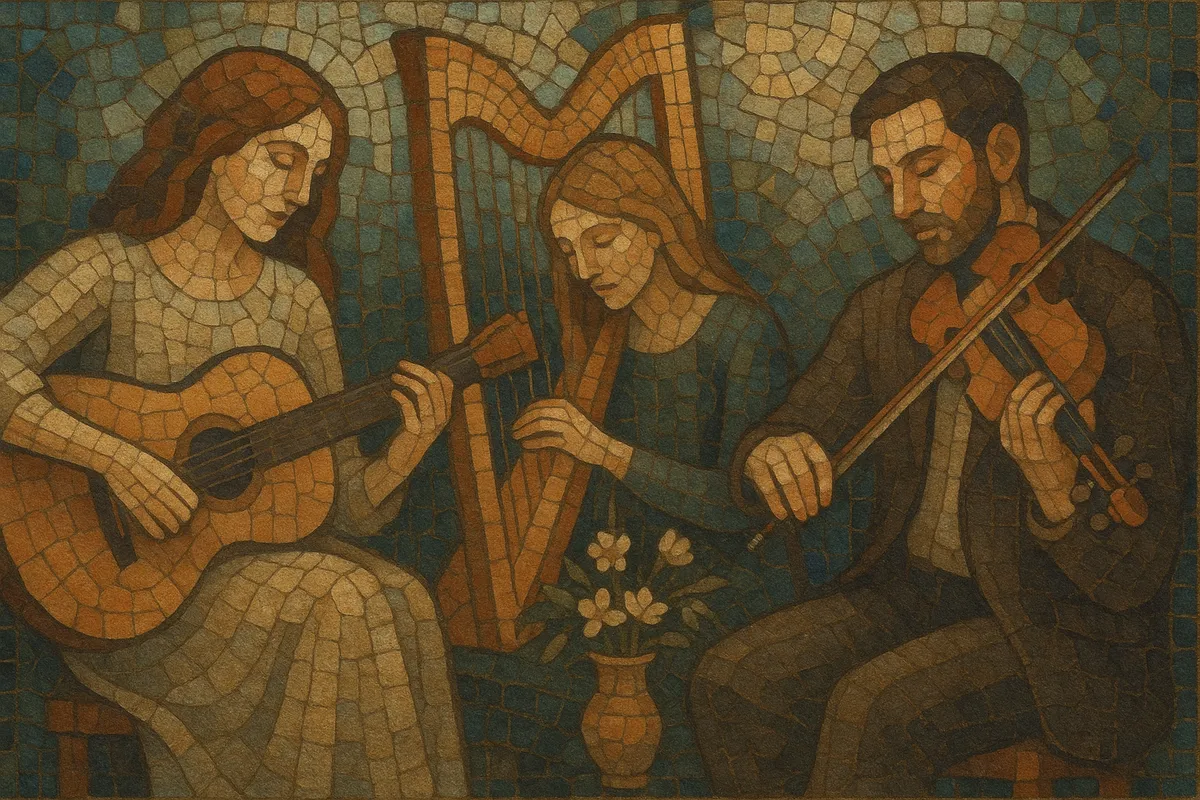
Chamber folk blends singer‑songwriter and traditional folk songwriting with the textures and arranging techniques of chamber music. Acoustic guitar, harp, or piano typically carry the song, while small ensembles of strings and woodwinds provide counter‑melodies, pedal drones, and delicate harmonic color.
The style favors intimate vocals, close‑miked acoustic timbres, and nuanced dynamics over percussive drive. Arrangements often develop patiently, using techniques like pizzicato, harmonics, and gentle swells to underline narrative, pastoral, or reflective lyrics. The overall mood is warm, detailed, and quietly expansive.
While folk artists in the 1960s and 1970s (e.g., string‑adorned singer‑songwriters) hinted at orchestral folk textures, the explicit fusion of small‑ensemble classical arranging with contemporary folk songwriting took clearer shape alongside the 1990s revival of chamber pop and the indie folk movement.
In the 2000s, U.S. indie scenes foregrounded chamber instrumentation within folk frameworks. Albums by Joanna Newsom and Sufjan Stevens set templates for harp or guitar‑led songs expanded by string quartets, woodwinds, brass, and carefully layered counterpoint. Independent labels and classically trained collaborators (arrangers and small ensembles) helped normalize this crossover in recording and live settings.
The style broadened across the U.K. and Europe, with artists integrating regional folk idioms into refined chamber textures. Collaborations between singer‑songwriters and contemporary classical players (e.g., composer‑arranger partnerships and flexible ensembles) became common. Streaming and film/TV syncs favored its intimate yet cinematic sound, and improvements in home recording enabled detailed acoustic productions. Today, chamber folk overlaps with art pop, modern classical, and acoustic pop while maintaining folk’s storytelling core.

